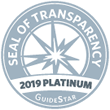CLINICAL THYROIDOLOGY FOR THE PUBLIC
A publication of the American Thyroid Association
Summaries for the Public from Clinical Thyroidology (from recent articles in Clinical Thyroidology)
Table of Contents | PDF File for Saving and Printing
THYROID NODULES
Qualitative ultrasound elastography holds promise for avoiding biopsy in some thyroid nodules
ABBREVIATIONS & DEFINITIONS
Thyroid nodule: an abnormal growth of thyroid cells that forms a lump within the thyroid. While most thyroid nodules are non-cancerous (Benign), ~5% are cancerous.
Thyroid Ultrasound: a common imaging test used to evaluate the structure of the thyroid gland. Ultrasound uses soundwaves to create a picture of the structure of the thyroid gland and accurately identify and characterize nodules within the thyroid. Ultrasound is also frequently used to guide the needle into a nodule during a thyroid nodule biopsy.
Elastography: an ultrasound technique used to measure the stiffness of a thyroid nodule. Cancerous nodules are stiffer than benign nodules.
Thyroid fine needle aspiration biopsy (FNAB): a simple procedure that is done in the doctor’s office to determine if a thyroid nodule is benign (non-cancerous) or cancer. The doctor uses a very thin needle to withdraw cells from the thyroid nodule. Patients usually return home or to work after the biopsy without any ill effects.
Meta-review: a study that combines and analyzes the data from several other studies addressing the same research hypothesis.
BACKGROUND
Thyroid nodules are exceedingly common, found in up to 50% of the population on ultrasound. Ultrasound evaluation is a mainstay in the evaluation of thyroid nodules. However, ultrasound appearance alone is not yet good enough to make a diagnosis. Most nodules still require a biopsy in ruling out thyroid cancer. Even thyroid biopsy has some limitations which require further testing or surgery. Quantitative elastography is an ultrasound technique to measure the stiffness or softness of a nodule. Cancerous nodules are stiffer than benign nodules. The goal of the study is to determine how accurate elastography is in determining if the nodule is benign or cancerous.
THE FULL ARTICLE TITLE:
Nell S et al Qualitative elastography can replace thyroid nodule fine-needle aspiration in patients with soft thyroid nodules. A systematic review and meta-analysis. Eur J Radiol 2015;84:652-61. Epub January 16, 2015
SUMMARY OF THE STUDY
This is a meta-review of 20 previously reported studies including 3908 thyroid nodules referred for biopsy, qualitative elastography, and a reference test such as histology or cytology. All nodules in the study were classified in the Asteria elastography (ES) classification as follows: ES 1 nodules are soft in their entirety, ES 4 are hard nodules and ES 2 and ES 3 have varying levels of hardness. ES 1 and ES 2 nodules were considered to show benign characteristics while ES 3 and ES 4 nodules were considered to show cancerous characteristics. Approximately 62% of the nodules were ES 1 or ES 2 and nodules classified as ES 1 were 99% benign. The ES 3 and 4 nodules were suggestive to be cancerous but not with the certainty that would avoid a biopsy and allow proceeding directly to surgery.
WHAT ARE THE IMPLICATIONS OF THIS STUDY?
This study suggests that soft thyroid nodules (ES 1 classification) are 99% benign and would, thus, eliminate the need for biopsy in approximately 14% of thyroid nodules. Nodules classified as ES2 were suggestive but not as conclusive of a benign nodule. Overall, this study suggests that quantitative elastography an be an important tool in the evaluation of thyroid nodules and may allow some patients to avoid a thyroid biopsy.
—Julie Hallanger Johnson, MD
ATA THYROID BROCHURE LINKS
Thyroid Nodules: http://www.thyroid.org/what-are-thyroid-nodules


